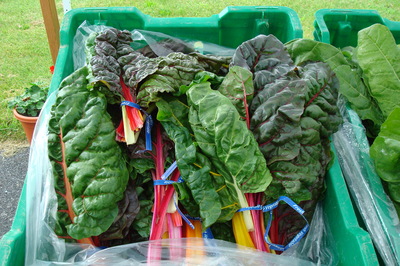Chard

General Information
Chard is a mild tasting and environmentally resilient green. You can use it wherever you would use spinach. It is the same genus and species as beets, but this variety is selected to grow large leaves and not a large root.
Storage Information
Chard should be stored in a plastic bag in your refrigerator. It will last a week or two.
Cooking Suggestions
Chard can be eaten raw or cooked.
The leaves and stems are both edible. Be sure to cook them separately since the stems take longer than the leaves. Stems take about 5-10 minutes to cook, while leaves only take 2-4 minutes.
Use in soups, stir-fries or burritos.
Saute lightly with olive oil and onion, then add a splash of balsamic vinegar and serve as a side dish.
Recipes
Chard and Chickpea Soup with Sausage and Pepper
Chard with Currants and Pine Nuts
Chard with Pine Nuts Parmesan and Basil
**Curried Red Lentil and Chard Soup**
Sauteed Chard with Mustard Seeds
Sauteed Swiss Chard with Parmesan Cheese
Scandinavian Greens, Potatoes and Sausage
Winter Squash Souffle and Greens